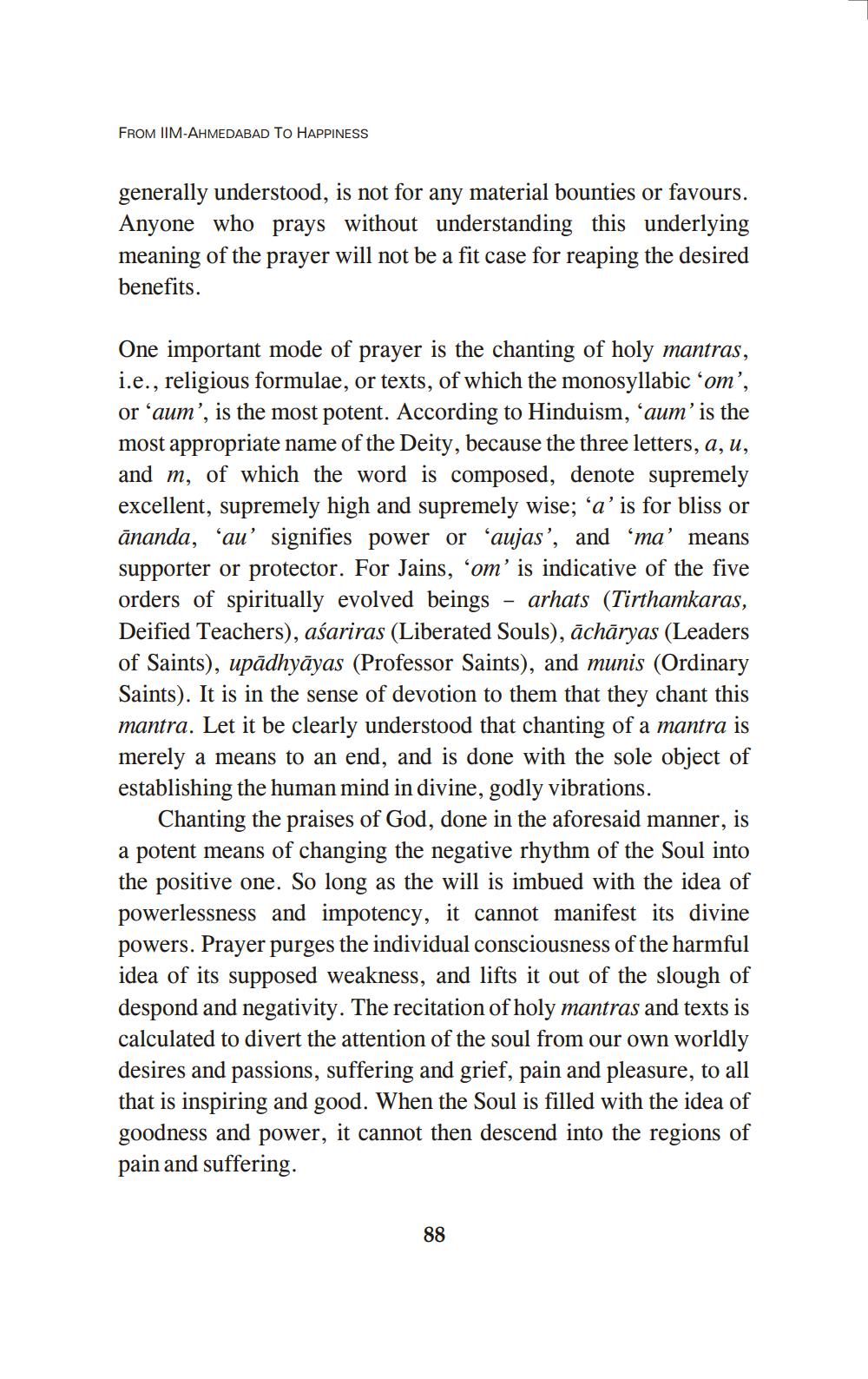________________
FROM IIM-AHMEDABAD TO HAPPINESS
generally understood, is not for any material bounties or favours. Anyone who prays without understanding this underlying meaning of the prayer will not be a fit case for reaping the desired benefits.
One important mode of prayer is the chanting of holy mantras, i.e., religious formulae, or texts, of which the monosyllabic ‘om', or ‘aum’, is the most potent. According to Hinduism, ‘aum’ is the most appropriate name of the Deity, because the three letters, a, u. and m, of which the word is composed, denote supremely excellent, supremely high and supremely wise; 'a' is for bliss or ānanda, ‘au' signifies power or ‘aujas', and 'ma' means supporter or protector. For Jains, 'om' is indicative of the five orders of spiritually evolved beings - arhats (Tirthamkaras, Deified Teachers), aśariras (Liberated Souls), āchāryas (Leaders of Saints), upādhyāyas (Professor Saints), and munis (Ordinary Saints). It is in the sense of devotion to them that they chant this mantra. Let it be clearly understood that chanting of a mantra is merely a means to an end, and is done with the sole object of establishing the human mind in divine, godly vibrations.
Chanting the praises of God, done in the aforesaid manner, is a potent means of changing the negative rhythm of the Soul into the positive one. So long as the will is imbued with the idea of powerlessness and impotency, it cannot manifest its divine powers. Prayer purges the individual consciousness of the harmful idea of its supposed weakness, and lifts it out of the slough of despond and negativity. The recitation of holy mantras and texts is calculated to divert the attention of the soul from our own worldly desires and passions, suffering and grief, pain and pleasure, to all that is inspiring and good. When the Soul is filled with the idea of goodness and power, it cannot then descend into the regions of pain and suffering.
88




